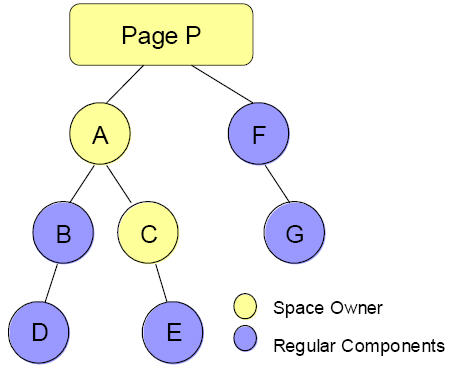It is common to decompose a visual presentation into several ZUML pages. For example, a page for displaying a purchase order, and a modal dialog for entering the payment term. If all components are uniquely identifiable in the same desktop, developers have to maintain the uniqueness of all identifiers for all pages that might created to the same desktop.
The concept of ID spaces is then introduced to resolved this issue. An ID space is a subset of components of a desktop. The uniqueness is guaranteed only in the scope of an ID space.
The simplest form of an ID space is a window (org.zkoss.zul.Window). All descendant components of a window (including the window itself) forms an independent ID space. Thus, you could use a window as the topmost component of each page, such that developers need to maintain the uniqueness of each page separately.
More generally, any component could form an ID space as long as it implements the org.zkoss.zk.ui.IdSpace interface. Page also implements the IdSpace interface, so it is also a space owner.
The topmost component of an ID space is called the owner of the ID space, which could be retrieved by the getSpaceOwner method in the Component interface.

If an ID space, say X, is a descendant of another ID space, say Y, then space X's owner is part of space Y but descendants of X is not part of space Y.
As depicted in the figure, there are three spaces: P, A and C. Space P includes P, A, F and G. Space A includes A, B, C and D. Space C includes C and E.
Components in the same ID spaces are called fellows. For example, A, B, C and D are fellows of the same ID space.
To retrieve another fellow, you could use the getFellow method in the IdSpace interface or the Component interface.
Notice that the getFellow method can be invoked against any components in the same ID space, not just the space owner. Similarly, the getSpaceOwner method returns the same object for any components in the same ID space, no matter it is the space owner or not.
The org.zkoss.zk.ui.Path class provides utilities to simplify the location of a component among ID spaces. Its use is similar to java.io.File.
Path.getComponent("/A/C/E");
new Path("A/C", "E").getComponent();